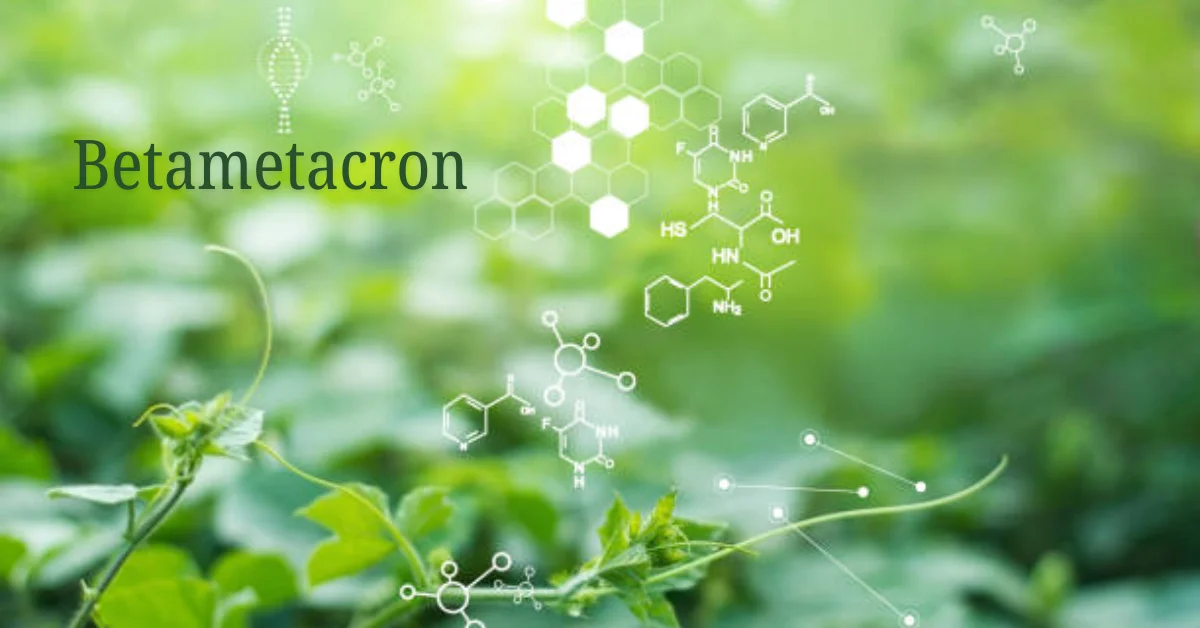Introduction to Betametacron and its uses
Betametacron is making waves in the agricultural sector as a selective herbicide with the potential to reshape farming practices. This innovative chemical promises to target unwanted weeds while preserving valuable crops, enticing farmers and agronomists alike. With an increasing global population, the demand for efficient and sustainable agricultural solutions has never been greater. Betametacron fits this niche perfectly, but its rapid adoption raises important questions. As we delve deeper into its impact on agriculture, technology, health, and ethics, it becomes clear that understanding betametacron’s role is crucial for navigating the future of food production and safety. Let’s explore what makes this herbicide both compelling and controversial in today’s world.
The rise in demand for selective herbicides
The agricultural landscape is evolving rapidly. With the growing global population, farmers face increasing pressure to produce more food on limited land. This challenge has spurred a significant rise in demand for selective herbicides.
Precision herbicides work by eliminating unwanted weeds without damaging the valuable crops growing nearby. Farmers appreciate these products as they help maintain healthy yields without harming other plants.
Moreover, sustainability trends have influenced this shift. Growers are keen on reducing chemical usage and minimizing environmental impact. Selective herbicides fit perfectly into integrated pest management strategies, enhancing crop protection with less overall input.
As innovation progresses, new formulations emerge that promise increased efficiency and safety. Such breakthroughs tackle today’s farming hurdles while laying the groundwork for greener, more sustainable agriculture tomorrow.
How Betametacron is disrupting agriculture?
Betametacron is changing the game in agriculture. As a selective herbicide, it targets specific weeds without harming crops. This precision helps farmers increase yields significantly.
Farmers are adopting Betametacron to combat resistant weed species. These invasive plants can choke out crops and reduce productivity. With effective weed control, growers can ensure healthier harvests and better quality produce.
The use of this herbicide also contributes to sustainable farming practices. By minimizing chemical applications, farmers lower their environmental footprint while maintaining crop health.
Moreover, Betametacron enables resource optimization. Farmers can focus on managing fewer pests with targeted treatments instead of blanket applications that waste time and resources.
As more agricultural stakeholders recognize its benefits, adoption rates are likely to rise further. The potential for increased efficiency makes Betametacron a vital tool for the future of farming.
The impact of Betametacron on technology and innovation
Betametacron is not just making waves in agriculture; it’s influencing technology and innovation as well. The herbicide’s selective action has prompted researchers to explore new methods of crop protection that integrate chemical solutions with advanced farming practices.
Farmers are increasingly adopting precision agriculture technologies, relying on data analytics and IoT devices to optimize the use of betametacron. This shift enhances efficiency by targeting weeds while minimizing impact on desirable plants.
Thanks to drone advancements, Betametacron can now be applied with pinpoint accuracy, minimizing both overuse and ecological impact. These advancements open doors for a more sustainable approach to farming.
The synergy between betametacron and tech fosters an environment ripe for innovation across agricultural sectors. As challenges arise from climate change and population growth, such collaborations may prove essential in securing food supply chains for the future.
Potential health risks associated with Betametacron exposure
Exposure to Betametacron raises several health concerns that warrant attention. Although it is designed for agricultural use, unintended contact can occur through inhalation or skin absorption.
Studies suggest a link between this herbicide and various health issues. Symptoms may include respiratory problems, skin irritation, and in some cases, neurological effects. Individuals with pre-existing conditions could experience exacerbated symptoms.
Long-term exposure remains particularly alarming. Chronic contact might lead to more severe ailments, including endocrine disruption or reproductive issues. Vulnerable populations such as farm workers are at heightened risk due to their frequent handling of the chemical.
Regulatory agencies continue assessing these risks but gaps remain in our understanding of Betametacron’s full impact on human health. The need for comprehensive research has never been more critical as agriculture increasingly relies on such chemicals.
Ethical concerns surrounding the use of Betametacron
The use of Betametacron raises significant ethical questions within the agricultural community. As a selective herbicide, it targets specific weeds while preserving crops. However, this precision brings with it moral dilemmas.
Farmers often face pressure to maximize yields at any cost. The reliance on chemical solutions like Betametacron can lead to short-term gains but may compromise long-term sustainability practices.
Furthermore, there’s concern about its environmental impact. Chemical weed killers may unintentionally throw ecosystems off balance and affect plants or animals not meant to be harmed. This triggers debates about biodiversity and ecological balance.
Another pressing issue involves transparency in agriculture. Are farmers fully informed about potential risks? Public awareness is crucial for making educated decisions regarding crop management strategies.
The socio-economic implications cannot be ignored. Smaller farms might struggle to compete without using these chemicals, raising questions of equity and access in agriculture.
Future implications and possible solutions
The future of betametacron in agriculture presents both challenges and opportunities. As the demand for sustainable farming practices grows, the search for alternatives intensifies. Innovative herbicides that are less harmful to ecosystems could emerge.
Research into biopesticides offers a glimmer of hope. These natural solutions may reduce dependency on synthetic chemicals like betametacron while maintaining crop yields.
Education is key. Farmers must be informed about best practices for using current herbicides responsibly, minimizing risks to health and environment alike.
Moreover, regulatory frameworks should adapt to evolving scientific insights. Stricter guidelines can help ensure safer usage without stifling agricultural innovation.
Collaboration between scientists, farmers, and policymakers will pave the way forward. By embracing technology and sustainability together, we might mitigate some of the adverse effects linked with traditional herbicide use.
Conclusion
Betametacron is quickly becoming a critical player in modern agriculture. Its selective herbicide properties allow farmers to target unwanted weeds while preserving valuable crops. As the demand for efficient and sustainable agricultural solutions grows, Betametacron stands out as a promising option.
However, its rise is not without challenges. The increasing reliance on this chemical raises concerns about potential health risks associated with exposure. While regulatory bodies strive to maintain safety standards, ongoing research into its effects remains crucial.
Moreover, the ethical implications surrounding Betametacron’s use cannot be ignored. Farmers face tough decisions balancing productivity against environmental impact and human health risks. Innovation in technology might offer alternatives or enhancements that reduce dependency on such chemicals.
The future of agriculture may see significant changes influenced by Betametacron and similar products. Addressing these complexities will require collaboration among scientists, policymakers, and industry leaders to ensure safe practices are upheld while meeting growing food demands.
Navigating this landscape will shape the future of farming and our relationship with nature itself. It’s evident that understanding both the benefits and drawbacks of Betametacron is essential as we move forward into an uncertain yet innovative agricultural era.
Feed your soul with knowledge—explore the rest of the story on Tarnplanen.











